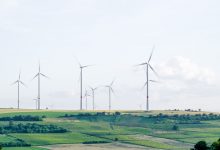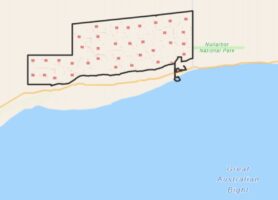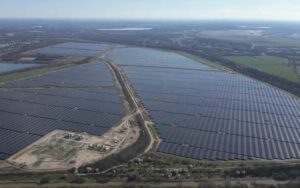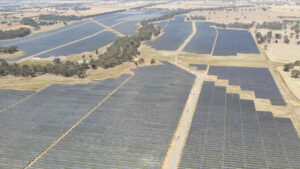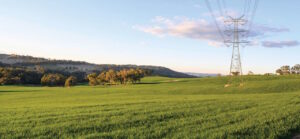German transmission system operator 50Hertz, one of four in the country, says that over 2018 well more than 50 per cent of the electricity consumed in the company’s grid area was generated by renewable energy sources.
50Hertz announced last Tuesday that 56.5% of the electricity consumed in 2018 across its grid area was supplied by renewable energy sources, up from the 53.4% recorded in 2017, due in large part to an increase in installed capacity, which grew to 32.9 GW as of the end of 2018.
Further, 50Hertz expects this share to continue to increase in view of the Germany’s 65 per cent by 2030 renewable energy target, announced just over a year ago. In fact, 50Hertz expects the 65 per cent figure to be achieved in its grid area in 2021.
This in and of itself is in line with comments 50Hertz CEO Boris Schucht made to RenewEconomyin December of 2015, suggesting that Germany’s electricity market could accommodate 60 per cent to 70 per cent variable renewable energy integration without the need for additional storage.
Fast-forward just over three years and Schucht’s vision is coming to pass. Further, even as approximately 1.6 GW of new renewable energy was added in 2018, 50Hertz reported at their balance sheet press conference held in Berlin on 26 February that congestion management costs dropped significantly in 2018, with a decrease of approximately €100 million based on preliminary data.
According to the company’s press release, its South-West Interconnector – the Thuringian Power Bridge which became fully operational in 2017 – has had a “particularly positive” impact on congestion management costs.
Other factors included an optimised redispatch process, lower power exports to Austria and France, and the operational phase-shifting transformers at the borders with Poland and the Czech Republic which have allowed for better control of the load flows.
“We are proud that with this record share of renewables, we can contribute to a successful energy transition,” Schucht says.
50Hertz was once partly owned by Australia’s Industry Funds Management, but is now owned by German interests.
50Hertz’s ground-breaking 56.5% comes as Ireland’s state-owned power transmission operator, EirGrid, claimed that it could handle up to 65% variable renewable energy on the grid at any one time.
“The move to 65% represents a significant milestone and demonstrates EirGrid Group’s continued drive to integrate more renewable generation on the power system,” said Robin McCormick, EirGrid Director of Operations, Planning & Innovation at the time.
“It is a clear demonstration of the excellent collaborative work across the entire energy industry on the island. We look forward to continuing progress towards 75% variable renewable energy on the grid over the coming months and years.”
However, 50Hertz still has the record for actual annual renewable energy integration in Europe, as EirGrid announced in January 2019 that only 32% of electricity demand in Ireland during 2018 was met by renewable energy sources (and 36% in Northern Ireland).
Part of 50Hertz’s renewable energy portfolio was further solidified in 2018 with all of the submarine cables to the Wikinger and Arkona-Becken offshore wind farms in the Baltic Sea with the north-east coast of Rügen having been in trial operation.
Further, the Kriegers Flak Combined Grid Solution has been progressing, with voltage applied to the connection between the Kriegers Flak offshore wind farm (located in Danish waters) and the Baltic 2 offshore wind farm (in German waters) – a connection which will be integrated into the grid in 2019.

